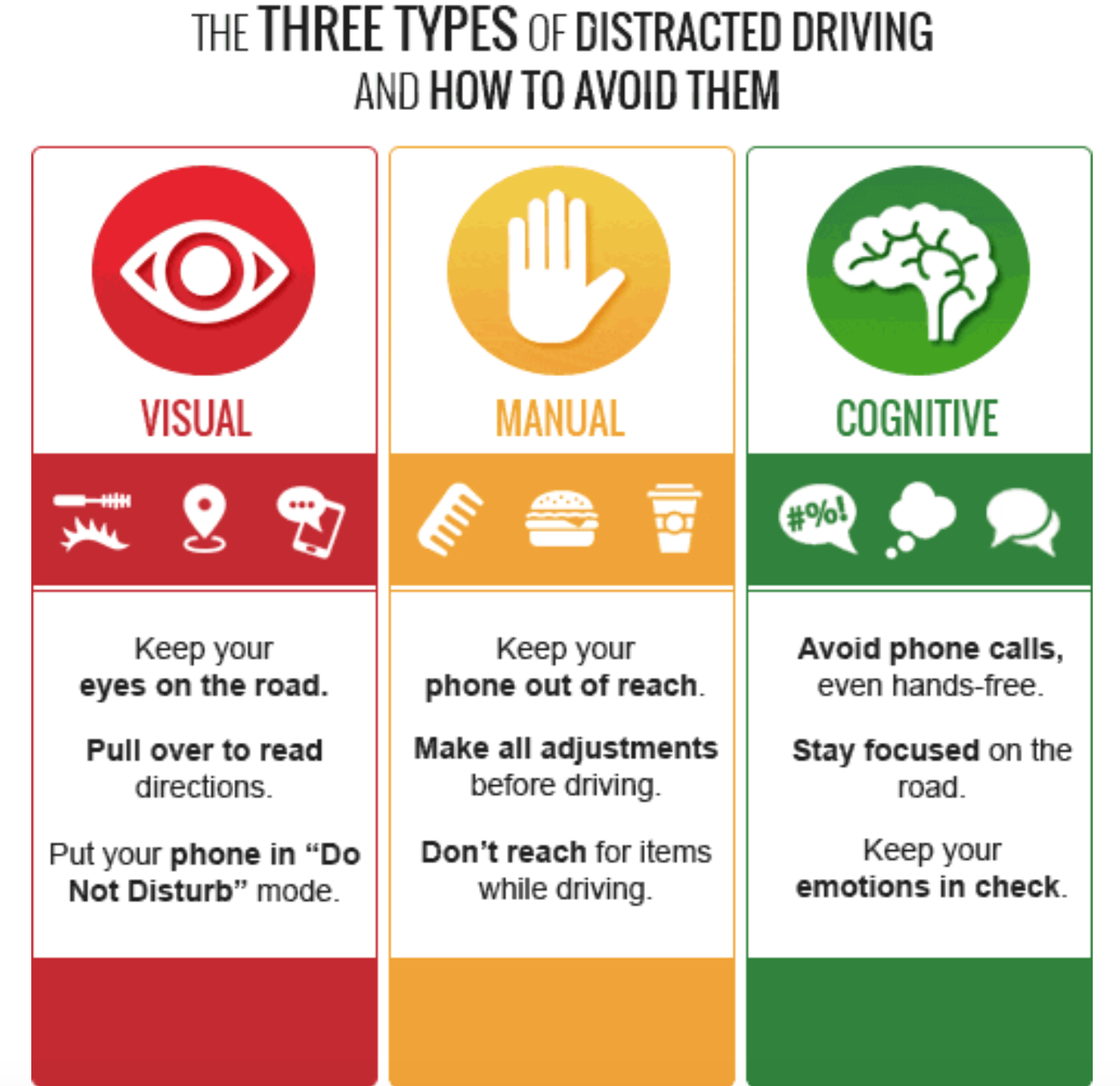How to be a Defensive Driver

Driving a vehicle may be risky business, but each of us has the power, let alone responsibility, to significantly reduce risks on the road simply by being a "defensive driver." We hear this term tossed around a lot, but what exactly does it mean?
Some of you may conjure up an image of a slow and cautious driver that always sticks to the right lane and signals well in advance before making a turn, but that's not what it is.
Being a defensive driver is all about maintaining awareness of your vehicle and surroundings, and taking every reasonable precaution that's necessary to prevent an accident, such as avoiding use of your phone while driving.
According to the IHSA, the root cause of 85% of motor vehicle collisions on Ontario's roads and highways is human error, meaning most accidents could and should have been prevented. So if being an irresponsible driver is the cause of most collisions, then being a defensive driver is the solution to the problem.
So what does it take to be a defensive driver? We all have it in us to be one. By adopting the following defensive tips and remaining steadfast in practicing good driving habits, you can avoid being a contributor to tragic statistics and even save yourself some money.
Check to make sure your vehicle is in safe operating condition
Being a defensive driver actually starts before turning the ignition key. You want to make sure your mirrors are clear and set properly, and most importantly that your tires have correct pressure.
Besides the brakes, tires are the next most important safety device on your car. Driving with low pressure tires will compromise fuel economy, braking, stability and cornering. In the worst case, it can lead to tire failure and a serious accident, so if you're unsure about how to check your tire pressure, watch this video:
Make sure you're in a stable physical & emotional state to drive safely
You always want to be on your A game when driving, so if you're feeling tired, depressed, irritated or even overly excited -- take a breather before turning the ignition key. Don't underestimate the serious effect your emotions, fatigue or stress can have on your driving ability -- it can be just as harmful as driving while intoxicated.
If, however, driving is unavoidable, at least give yourself a few moments to slow your role. Whether closing your eyes and taking deep breaths for 10 minutes does the trick, or taking a short walk helps you settle down, give yourself some time to relax. Check out this instant relaxation technique you can try if you're not on your A game:
Reduce distractions as much as possible
This is the most obvious and well-known defensive driving tactic, yet distracted driving is at an all-time high! Avoiding use of mobile devices and iPods while driving is one thing (it's pretty much the law everywhere now), but even music can serve as a distraction, as is munching on a hamburger or applying makeup when at a red light. Just don't do it!
Distractions are the #1 reason behind accidents and fatalities on the road, so basically anything that causes you to lose focus is a distraction and you need to eliminate them. The following image from the DMV goes into the 3 main types of distractions and what you can do to avoid them. While this is common sense, it's an important reminder to practice these good driving habits:

When it comes to driving in adverse weather conditions, you can disregard what the posted speed limit is and SLOW DOWN; speed is your enemy. The following is a comprehensive video on how to drive safely in bad weather conditions, with tips on what to do when you encounter rain, fog, sand, snow, etc.
Always do your shoulder checks
You never, ever want to assume you know the location of every vehicle around you, so make it a habit to shoulder check aka check your blind spot before you move to the left or right. The following is your basic "how to" video for making a lane change and checking your blind spot:
Pay attention to what's ahead, behind and beside you
Being a defensive driver entails having awareness of everything around you. The general rule is to be aware of what is 15-20 seconds ahead of you, but at the same time you don't want to narrow your focus entirely there, it's also important to know what's beside and behind you by moving your eyes around to maintain peripheral vision and using your mirrors regularly, about every 5-8 seconds.
Use the 3-second Following Distance Rule
You always want to leave enough space between your vehicle and the vehicle ahead of you so that you have enough time to react if the car in front of you stops or slows down. The following video shows you how to apply the 3-second Following Distance Rule:
Being a defensive driver isn't limited to practicing these defensive driving techniques, it also involves having the right attitude which can have a tremendous effect on your safety and for those who are sharing the road with you. Having the right attitude can mean not succoming to road rage, or always being willing to yield to the right of way to other drivers.
Many car insurance companies will reduce your premium if you are able to maintain an accident-free driving record and/or take an accredited course on defensive-driving. If you're in Ontario and interested in learning more on how to become a defensive driver, the IHSA has several training courses that can help. Visit ihsa.ca to find out when and where their courses are taking place.